
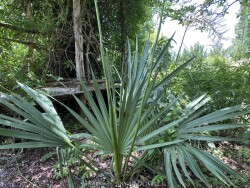
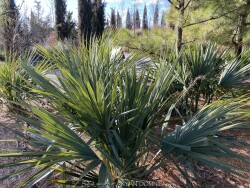
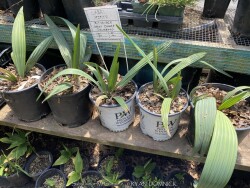
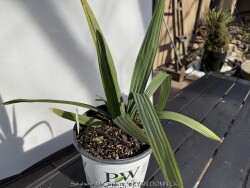
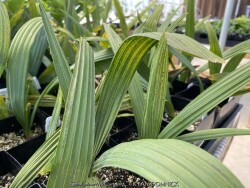
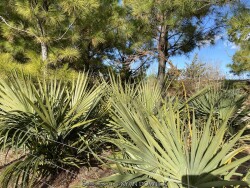
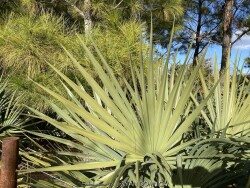
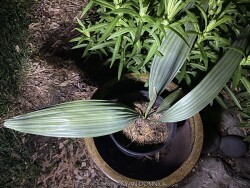
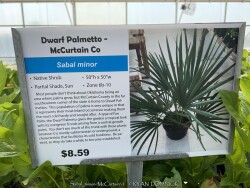
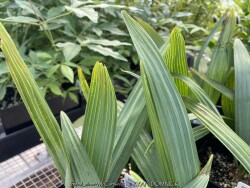
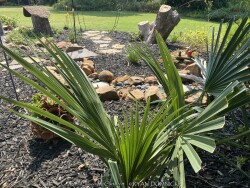

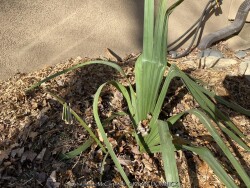
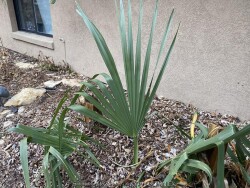
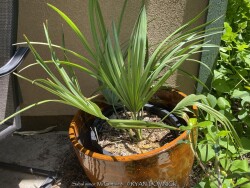
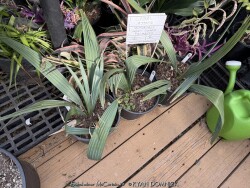
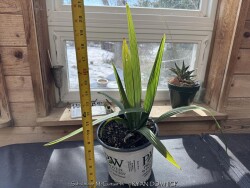
Plant Min Zone: 6a
Plant Max Zone: 10b
Sunlight: Full Sun, Part Sun
Water / Rainfall: Average, High, Very High
Soil Quality: Average, Rich
Bloom Season: Summer
Flower Color: Insignificant
Berry / Fruit Color: Black
Spring Foliage Color: Green
Summer Foliage Color: Green
Fall Foliage Color: Green
Evergreen Foliage: Yes
Winter Interest: Yes
Scented Flowers: No
Drought Tolerance: Low, Medium
Wet-Feet Tolerance: High
Humidity Tolerance: High
Wind Tolerance: Medium
Poor Soil Tolerance: Clay Soils, Acidic Soil (low PH)
Height: 2' - 3'
Width: 2' - 3'
Growth Rate: Slow, Extremely Slow
Service Life: Very Long: 10-20 years
Maintenance Need: Low
Spreading Potential: Extremely Low
Yearly Trimming Tips: Trim Evergreen Shrub Yearly in Spring or Summer to Desired Size: Not Grown for Flowers or Fruit.
Plant Grouping Size: Specimen Planting of 1-3
Best Side of House: South Exposure, West Exposure
Extreme Planting Locations: Tolerates Extreme Heat, Resistant to Rabbits, Base of Retaining Wall Locations
Ornamental Features: Bright Winter Color, Multiple Seasons of Interest, Large Tropical Foliage / Flowers, Exceptional / Colorful Foliage
Special Landscape Uses: None
Possible Pest Problems: None
Plant Limitations: May get Occasional Winter-kill, Needs Thick Winter Mulch, Needs Regular Irrigation, Slow to Reach Mature Size
Shippable in 2026: YES
Hardy Dwarf Palmetto (Sabal minor) is among the world's most cold-hardy palms and spread over a large geographical area in the Southeast USA. Green foliage is waxy and fan-like; typical of any fan palm. When grown in a northern climate such as Kansas, growth is pretty slow at first and some winter damage should be expected if temperatures drop below -5 degrees F. It is advisable to mulch the crown of a newly planted Sabal minor with 6 to 8 inches of mulch for the first few years. Established plants get about 2 to 3 feet tall after 10-20 years. Sabal minor tolerate excessive moisture and rain gardens but prefer rich well-drained soil. Sabal minor needs full sun and a hot and humid (Kansas) summer to build up stored energy for the next winter. They are also notably drought tolerant if established and grown in full sun. Useful in the landscape as a tropical looking evergreen specimen plant. Unlike other Evergreens, needle palm maintains bright green foliage, not dingy olive green like many conifers. Combine with just about any other flowering plants and most garden themes. This true palm, however, is a must for any tropical theme garden. Mix with hardy banana (Musa basjoo), canna, or crinum lily! Growth is quite slow with young plants but speeds up with establishment and rich soils, regular water, and full sun. It is best to start with large plants as establishment and full winter-hardiness will occur much faster. A thick layer of mulch greatly helps with cold hardiness. South or West exposure is best. Established plants have been spotted in Oklahoma enduring temperatures as low as -13°F in 2021. One population of Sabal minor is actually native as far North as Oklahoma (Southeast corner); a resulting variety has been named Sabal minor 'McCurtain'. Plants have been recorded handling -24F in Wichita, KS. 'McCurtain' tends to grow larger and faster than the common species; which is good for replacing lost energy from winterkill. Avoid North-facing exposures.